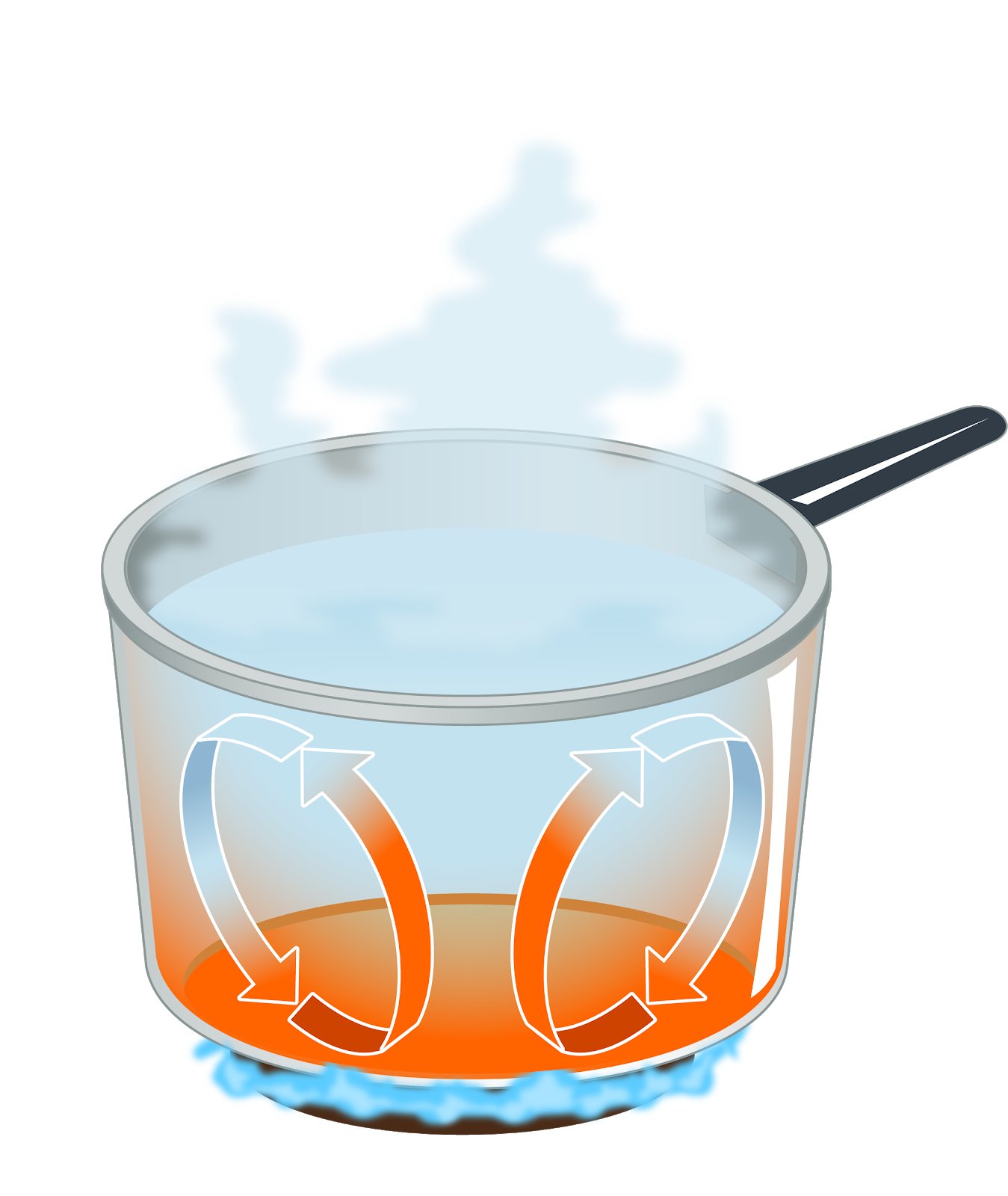Convection
It is important to realize that convection is the primary mode of heat transfer early in the growth of a compartment fire, and also plays a role in heat transfer at any location where hot smoke travels.
|
Convection: Heat transfer by circulation within a medium such as a gas or a liquid. |
The most familiar example of convection is the movement of the water in a boiling pot. In Figure 24, the pot is heated by conduction from the hot stove element, therefore heating the water near the bottom of the pot. The heated fluid rises, and cooler water sinks down to replace it. In a fire, convection heat transfer takes place between the rising hot gases from the fire and the surfaces they flow past. The higher the velocity of the gas, the greater the rate of convective heat transfer.
Convective heat transfer can occur in two ways: by natural or forced convection. In natural convection, the velocity of the gas flowing over the material is the result of flows generated by buoyancy as a result of a temperature difference between the surface and the gas. This is the case for the hot gases coming from the flaming combustion zone in a fire plume. In forced convection, the velocity of the gas flowing over the material is externally imposed (e.g., by a fan, as in a convection oven). This is a critical factor with wind-driven fires, and will be discussed later in the curriculum.
